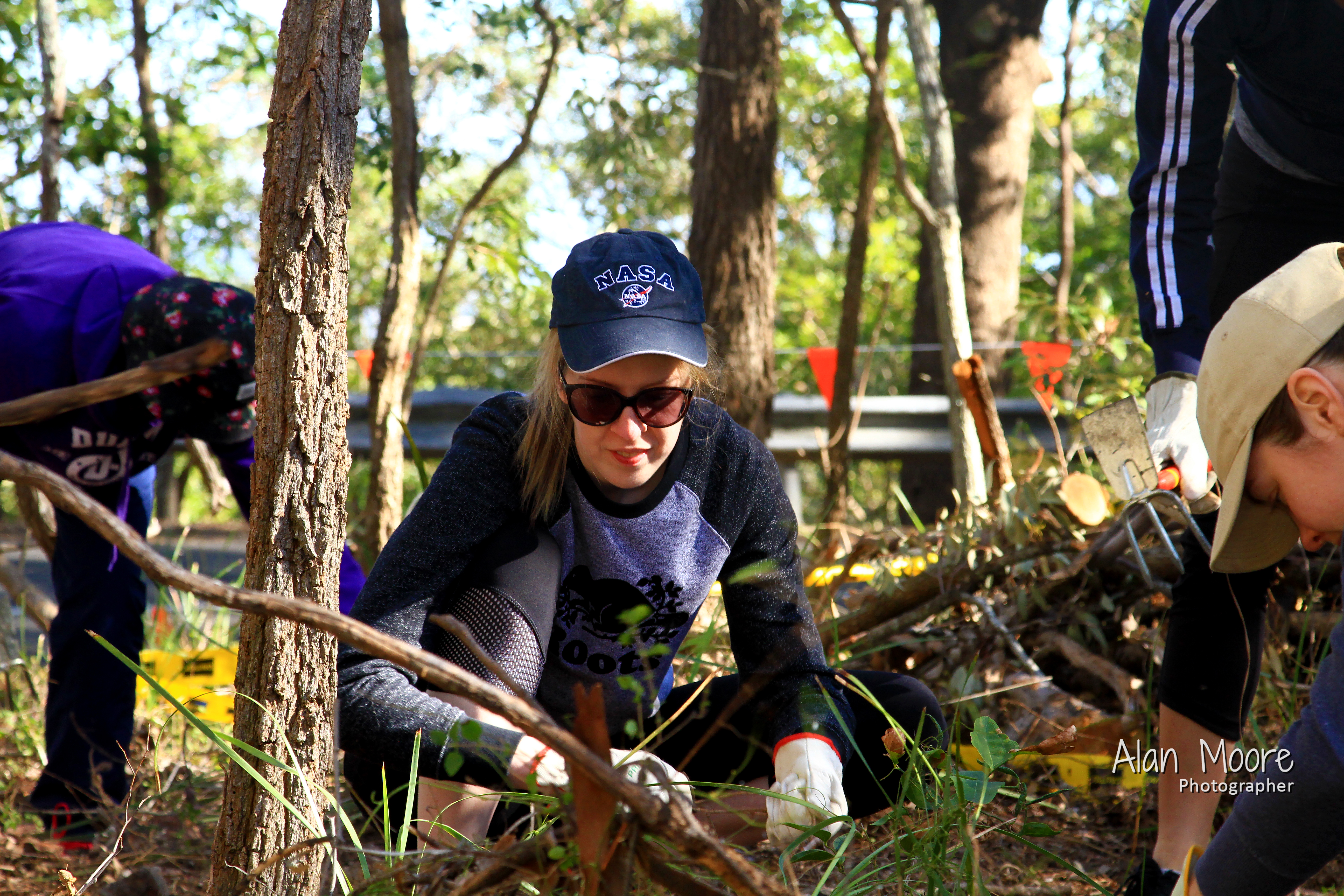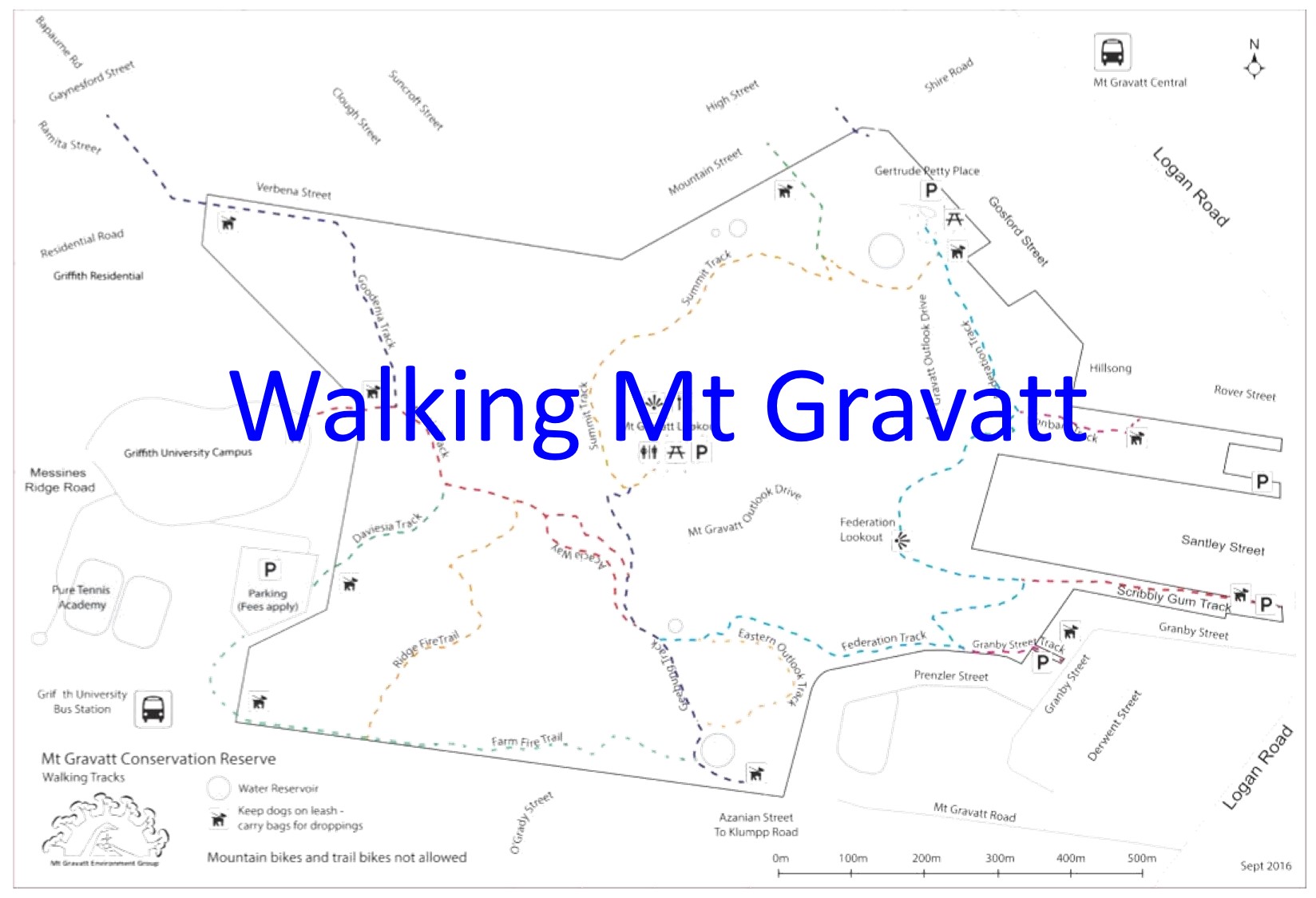
November 2011
By: Michael Fox
2011 Our first Community Gully Day, two years ago, saw the removal of six cubic metres of rubbish, poisonous Yellow Oleander Thevetia peruviana and Madeira Vine Anredera cordifolia, stabilised the banks with logs leaving the ground bare and storm water pipes a visual blight.

November 2012
d
d
d
d
2012 Between Gully Days restoration work continues with regular Tuesday Bushcare events. Mirandha, Griffith University Bushcare Club, feeds Chinese Elm branches into out chipper.

August 2013
d
d
d
d
Coin-spot Treeferns Cyathea cooperi are thriving, bush foods like Native Mulberry Pipturus argenteus will growing and the storm water pipes are disappearing under branches creating ideal habitat for lizards and improving visual amenity.
d
d

Living Mulch reducing erosion and creating mico-habitat
d
d
d
d
d
d
d
2013 8am The team getting to work, Scott, Barry, Carol, Don and Marshal in background, with Matt and myself delivering hollow logs for habitat.

November 2012
Note the amazing mico-habitat created by the Living Mulch of native grasses – Rainforest Grass Oplismenus aemulus, Graceful Grass Ottochloa gracillima, and self-sown herbs like Native Hawksbeard Youngia japonica.
Even without the tree cover this area was several degrees cooler than the area just a little down the gully.
d

Clearing weed regrowth
d
d
d
d
A huge change from November 2012 when the gully was still bare.
d
d

Madeira Vine tuba removed from gully
d
d
d
d
8:30am Scott, Carol and Marshal have been busy clearing Mother-in-law’s Tongue Sansevieria trifasciata and Madeira Vine regrowth.

Matt and I install habitat log

Matt, Russ and Shawn positioning logs
d
d
d
Eradicating Madeira Vine in the gully is a long term project. The most effective removal approach for this fast growing invasive weed is simply digging out and immediately bagging the tubers. Madeira produced hundreds of tubers along the vine. Those tubers are viable for a long time and sprout like potatoes when they land in a suitable environment. The size of these tubers mean that using poison is often not an effective particularly in a vulnerable water course.
d
d
9am Matt and I install one of the hollow logs donated by Scott at Tree Bracers (eco-friendly) Tree Removal Specialists. Scott contacted me asking if we could use the logs as he did not want to simply chip this valuable habitat resource. Roger Medland and I collected the logs in Rogers ute.

Marshal splitting logs for stablising banks
Hollow logs are valuable habitat for wildlife and installing these logs will provide Possums and Gliders safe escape from Foxes and cats.
d
d
d
d
d
d
9:30am Matt, Russ and Shawn are positioning logs on the bank further down the gully. Logs reduce erosion, allow mulch and leaves to collect retaining water and keeping weeds down. Restoration work is also much faster and safer as the logs create a working platform for removing weeds and planting grasses, vines and trees.
d
d
d
d
d
d
The logs were recycled from a tree removed after the January storms. Dale from Climb n Grind returned to safely remove the tree leaving the trunk cut to useful lengths. Marshal and I then used a chainsaw and steel wedges to split the logs into manageable quarters ready for the Gully Day.

Len Kann with Stingless Bee hive
d
d
d
10:30am Time for a break. Genevieve has organised a sausage sizzle, coffee, tea, cake and fruit … mmmm.

Teddy Bear and Blue Banded native bees
While we eat, native bee expert and Mt Gravatt Environment Group member, Len Kann shares his passion for this fascinating wildlife we can bring to our backyards to pollinate our Queensland Nut trees and vegetables.
d
d

Inside the hive – Stingless Bees
Len explained that there are over 2,000 native bee species in Australia with many providing farmers with unique pollination services not provided by European Honey bees.

Rebecca planting
Len has put together a bee presentation box using one of his own empty hive boxes, specimen boxes with Blue Banded and Teddy Bear bees that we have collected in the Reserve, and excellent macro photos taken by member Alan Moore.
Len has generously provided one of his Stingless Bee hives on secondment in the gully and for his talk he bought along a hive he could open to let us see inside. For an ex-beekeeper like me it was fascinating to see the very different structure for storing honey and pollen, and, yes, it is nice not to collect the dozen of stings I received when robbing my European bee hives.
d
11am Rebecca is back to work planting the bank behind her property.
I am proud to live in a community that can come together on a long term project like this. Currently the owners of twenty properties are committed to restoration of their backyards as a wildlife corridor down Fox Gully and importantly work together to eradicate Madeira Vine.
We had twenty people participate in the 2013 Community Gully Day including people like Marshal and Carol who live beside Firefly Gully, Nancy who has propagated most of the Lomandras in the gully and Len who shared his passion for native bees.
Three hundred grasses, herbs, vines, shrubs and trees have been planted this year. Save Our Waterways Now (SOWN) generously gifted $400 worth of plants with other plants and resources purchased with over $200 in tax deductible donations from neighbours.



































